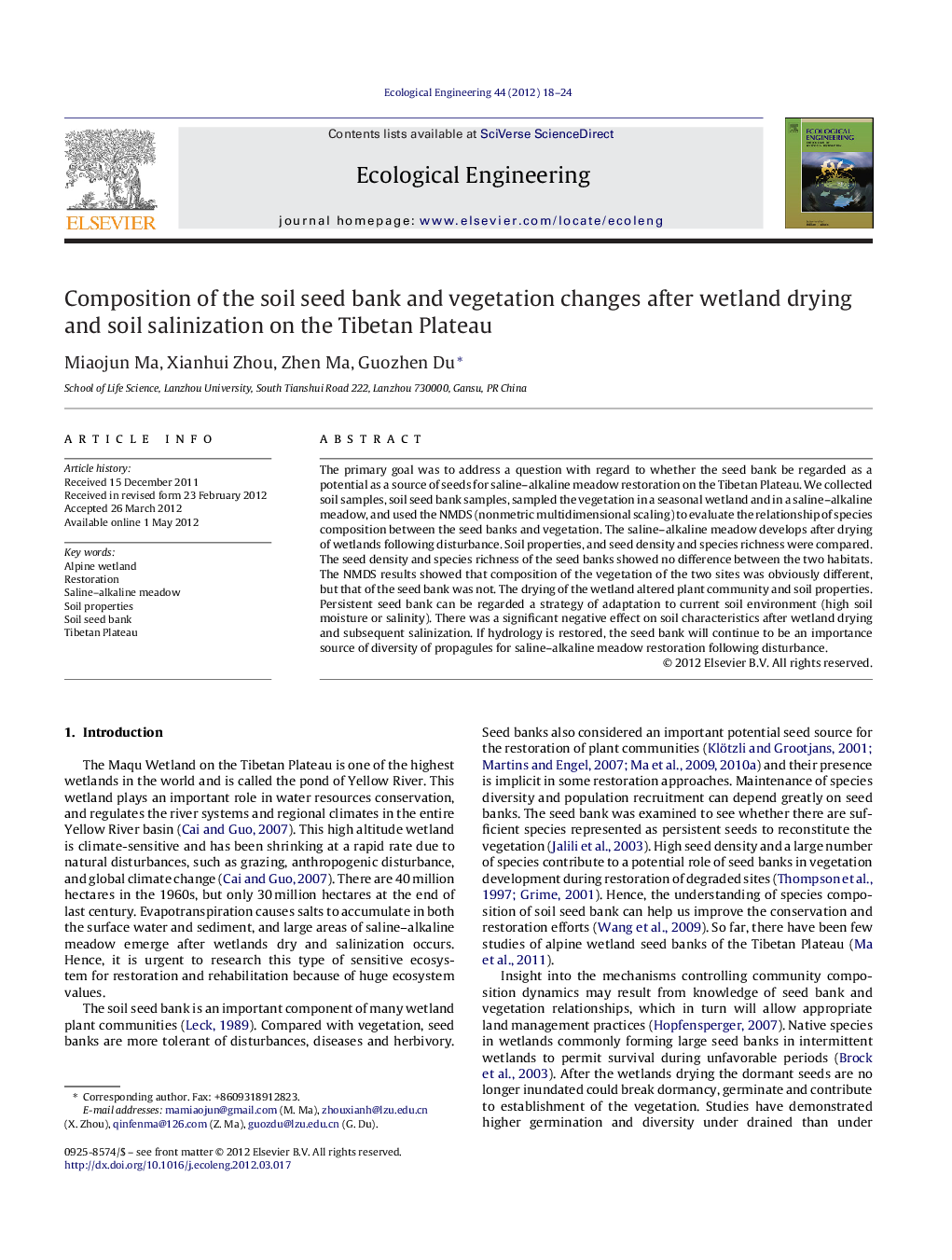| Article ID | Journal | Published Year | Pages | File Type |
|---|---|---|---|---|
| 6302652 | Ecological Engineering | 2012 | 7 Pages |
The primary goal was to address a question with regard to whether the seed bank be regarded as a potential as a source of seeds for saline-alkaline meadow restoration on the Tibetan Plateau. We collected soil samples, soil seed bank samples, sampled the vegetation in a seasonal wetland and in a saline-alkaline meadow, and used the NMDS (nonmetric multidimensional scaling) to evaluate the relationship of species composition between the seed banks and vegetation. The saline-alkaline meadow develops after drying of wetlands following disturbance. Soil properties, and seed density and species richness were compared. The seed density and species richness of the seed banks showed no difference between the two habitats. The NMDS results showed that composition of the vegetation of the two sites was obviously different, but that of the seed bank was not. The drying of the wetland altered plant community and soil properties. Persistent seed bank can be regarded a strategy of adaptation to current soil environment (high soil moisture or salinity). There was a significant negative effect on soil characteristics after wetland drying and subsequent salinization. If hydrology is restored, the seed bank will continue to be an importance source of diversity of propagules for saline-alkaline meadow restoration following disturbance.
